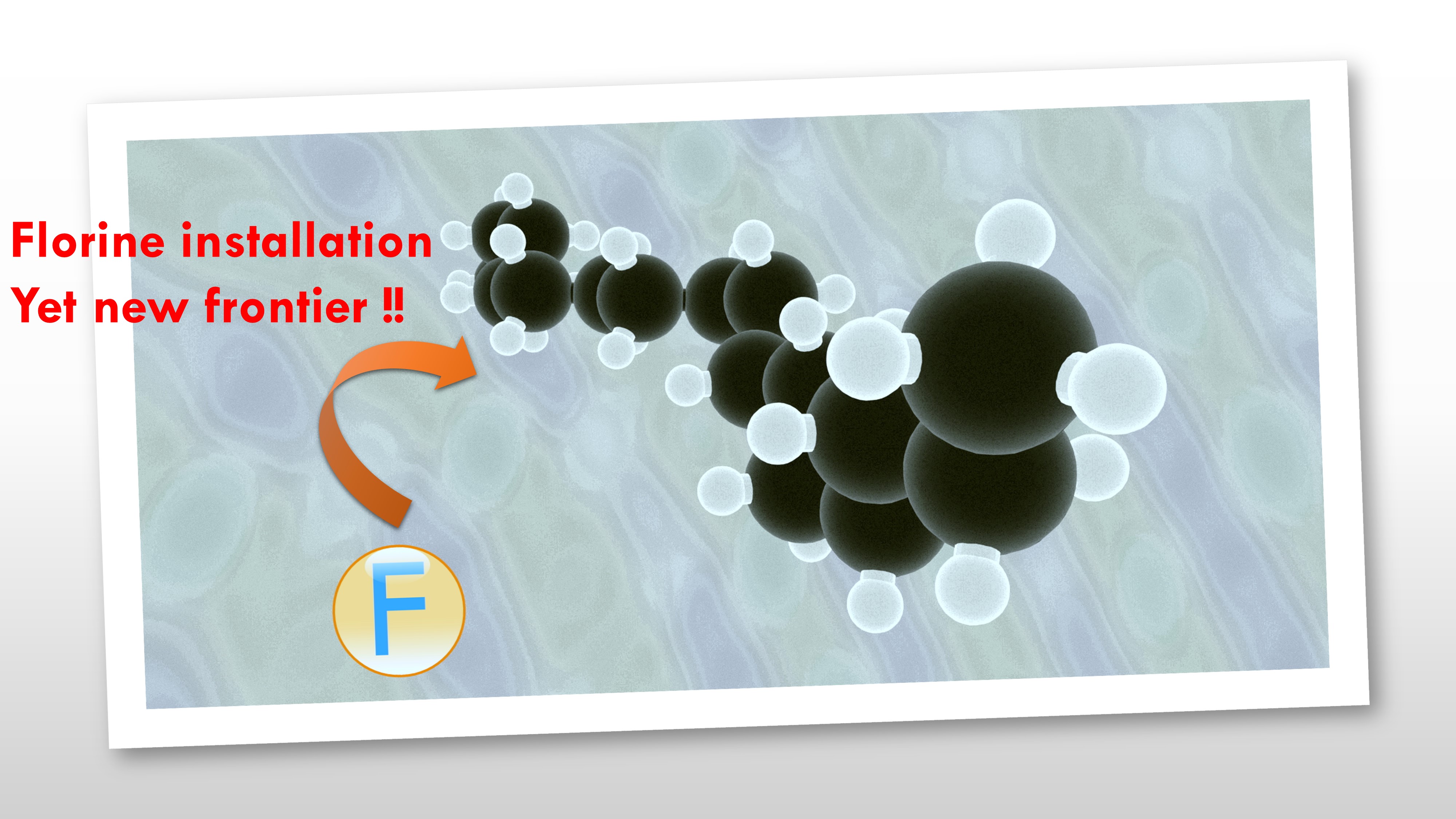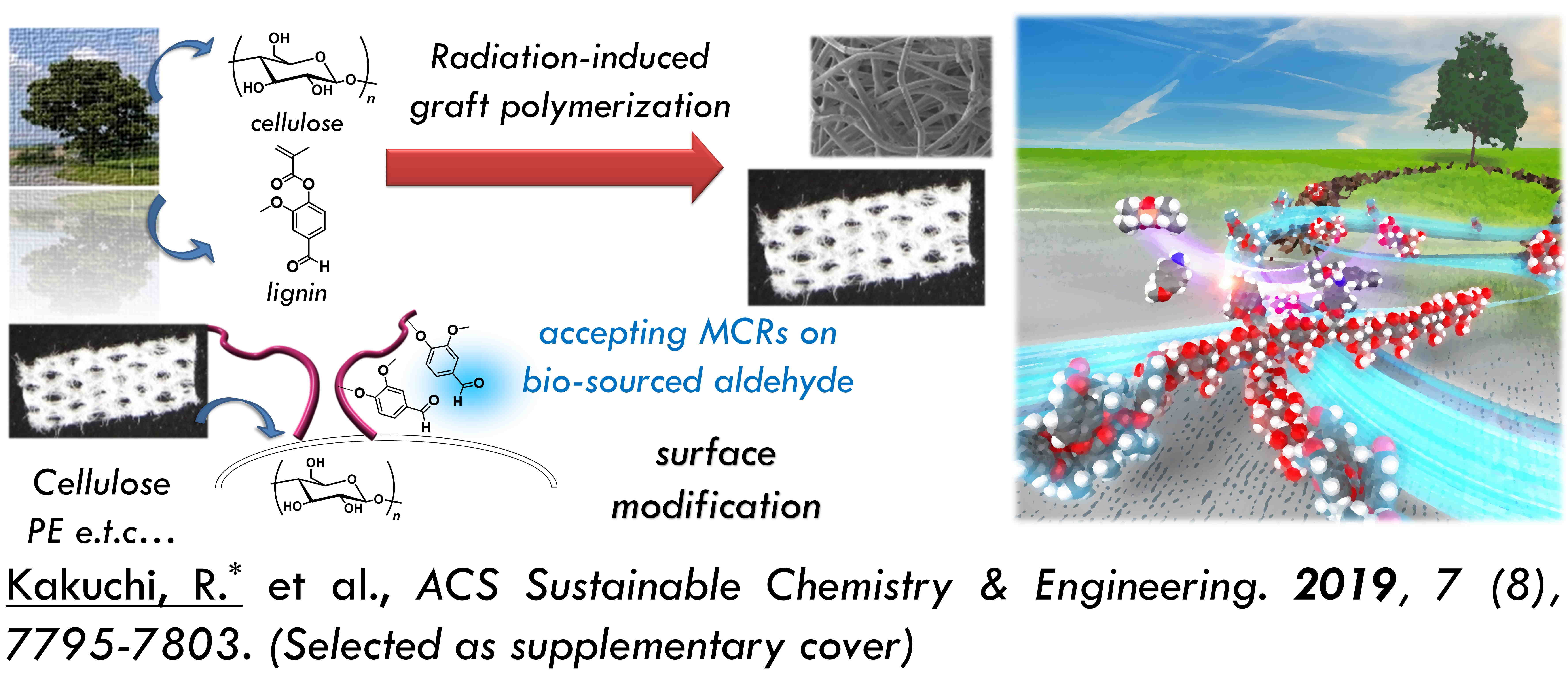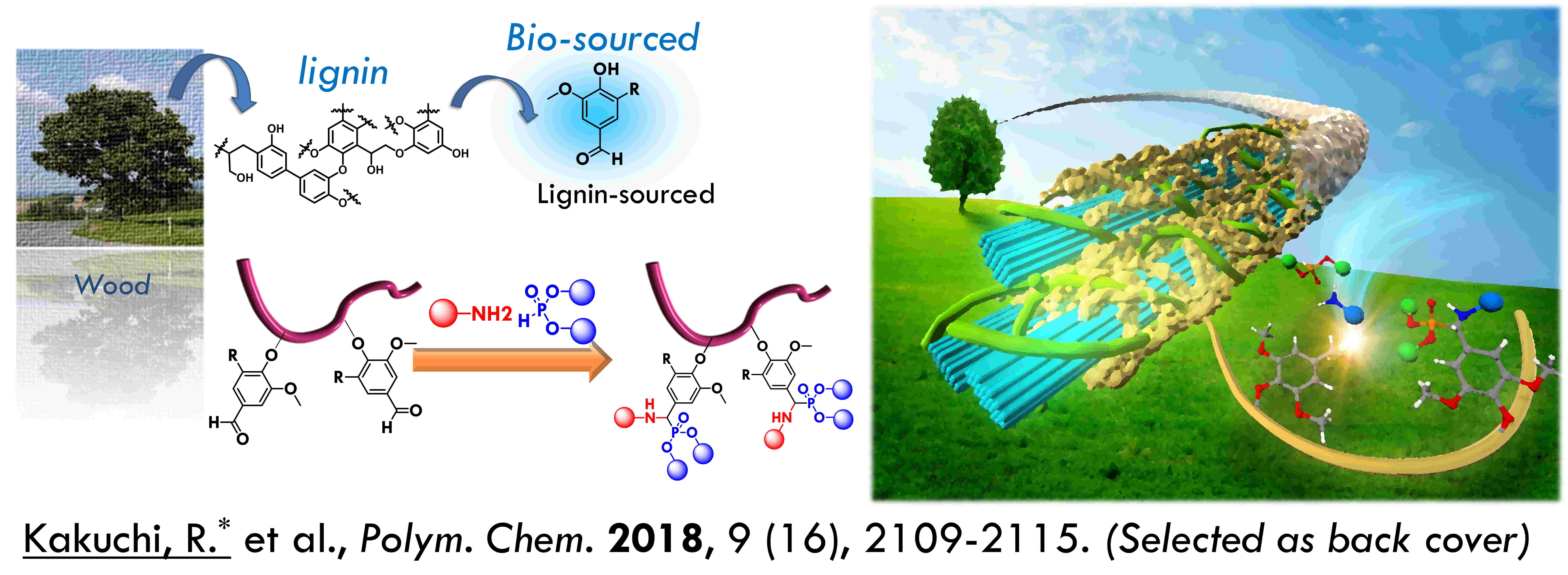Novel material synthesis using computational calculation and machine learning
-
 Everyday, polymers are applied in many situations, including ATM touchscreens and contact lenses. However, there are many unsolved problems in the field of chemistry, such as higher-performance material design and synthesis methods. Our laboratory aims to develop the next generation of polymer materials with the help of computers and without relying on experimental experience and intuition. Recently, we have created the machine learning model using properties of polymers that are easy for chemists to imagine, and have succeeded in understanding and predicting radiation-induced graft polymerization, one of the chemical surface reactions that create polymers. It is also possible to numerically analyze the properties that affect the reaction. For more information, please refer to the following paper.ChemPlusChem, 2023, e202300480.
Everyday, polymers are applied in many situations, including ATM touchscreens and contact lenses. However, there are many unsolved problems in the field of chemistry, such as higher-performance material design and synthesis methods. Our laboratory aims to develop the next generation of polymer materials with the help of computers and without relying on experimental experience and intuition. Recently, we have created the machine learning model using properties of polymers that are easy for chemists to imagine, and have succeeded in understanding and predicting radiation-induced graft polymerization, one of the chemical surface reactions that create polymers. It is also possible to numerically analyze the properties that affect the reaction. For more information, please refer to the following paper.ChemPlusChem, 2023, e202300480.
Polymer synthesis based on multi-component reactions
-

Multicomponent reactions (MCRs) refer to reactions where three or more reactants react in a one-pot manner to generate a single product. Despite its sophisticated nature, MCRs exist from the dawn of organic chemstry. In 1850s, the Strecker amino acid synthesis was discovered. In a modern manner, this reaction is classified as a three component reaction between amines, aldehydes, and cyanides. In the field of organic chemistry, MCRs have been widely utilized, whereas its integration into polymer chemistry was triggered very recently. In the lab, we are devoting our efforts into developing new polymer syntehsis methods based on MCRs. For more information, please go to the following paper, Kakuchi. R* "Multicomponent Reactions in Polymer Synthesis" Angew. Chem. Int. Ed. 2014, 53 (1), 46-48. A new review article was published, which you can freely access from the following link.avairable from here
New synthetic strategy for fluorine containing polymers
-
 Fluorine is one of the most distinctive elements due to its small atomic radius and the highest electronegativity. For this reason, fluorine containing polymers are well known to drastically alter their reactivity and fundamental physical properties as compared to corresponding usual polymers. Unfortunatelly, due to its characteristic properties, the fluorine installation strategy is generally extremely difficult. Because of the above backgrounds, we are developing new polymer syntheses taking advantage of the fluorine featuress jointly with the Amii laboratory who is specializing in fluorine chemistry. Details can not be documented yet, please contact us if you are interested in this topic.
Fluorine is one of the most distinctive elements due to its small atomic radius and the highest electronegativity. For this reason, fluorine containing polymers are well known to drastically alter their reactivity and fundamental physical properties as compared to corresponding usual polymers. Unfortunatelly, due to its characteristic properties, the fluorine installation strategy is generally extremely difficult. Because of the above backgrounds, we are developing new polymer syntheses taking advantage of the fluorine featuress jointly with the Amii laboratory who is specializing in fluorine chemistry. Details can not be documented yet, please contact us if you are interested in this topic.
A new surface engineering
-
 As the above two research themes showcased, our laboratory is devoting ourselves to a new synthetic chemistry. We are developing not only polymer synthesis but also modification methods of material surfaces based on new synthetic strategy that we have been discovering. Because this research is impossible in our laboratory, we are jointly tackling this topic with the group at National Institutes for Quantum and Radiological Science and Technology (QST) . By combining the graft polymerization technique of Takasaki Quantum Applied Research Laboratories and the polymer synthesis technique of our laboratory, we are exploring new material modification methods.
As the above two research themes showcased, our laboratory is devoting ourselves to a new synthetic chemistry. We are developing not only polymer synthesis but also modification methods of material surfaces based on new synthetic strategy that we have been discovering. Because this research is impossible in our laboratory, we are jointly tackling this topic with the group at National Institutes for Quantum and Radiological Science and Technology (QST) . By combining the graft polymerization technique of Takasaki Quantum Applied Research Laboratories and the polymer synthesis technique of our laboratory, we are exploring new material modification methods.
Polymer synthesis from bio-based compounds
-
 In recent years, the worldwide shortage of petroleum and the concomitant price increase have started to induce difficulties in our society. As such, the effective employment of biological resources have been gathering increasing attentions. In particular, there is a demand for effective use of woody biomass that can be abundantly sourced. Although The efficinet employment of polysaccharides such as cellulose have been enjoying significant progresses, that of aromatic biomass component, lignin, has been lagging behind. Therefore, we are aiming efficient utilization of lignin sourced compounds such as vanillin, to furnish highly functional materials.
In recent years, the worldwide shortage of petroleum and the concomitant price increase have started to induce difficulties in our society. As such, the effective employment of biological resources have been gathering increasing attentions. In particular, there is a demand for effective use of woody biomass that can be abundantly sourced. Although The efficinet employment of polysaccharides such as cellulose have been enjoying significant progresses, that of aromatic biomass component, lignin, has been lagging behind. Therefore, we are aiming efficient utilization of lignin sourced compounds such as vanillin, to furnish highly functional materials.







